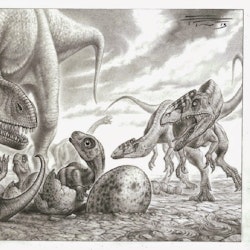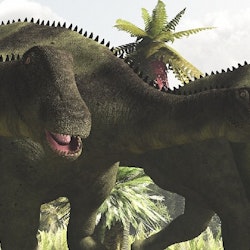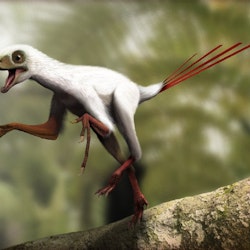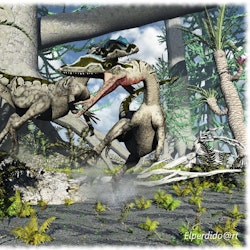Want to see other dinosaurs besides the ones from Jurassic? See all dinosaurs.
Search: or pick one for me
The theropods spread themselves widely throughout the Jurassic. They didn't all look like lumbering, slithering reptiles. But this was indeed the line that would lead to the classic meat-eating monsters we know and love. The forelimbs lost importance, and began to shrink. Most theropods walked on their hind legs, with a tail sticking out behind them to balance their heavy heads. They adapted their diets to suit niches of every kind, even vegetarian.
Theropods were the first creatures to show the beginnings of feathers. They survived through into the Cretaceous, and today have thousands of descendant species: Birds! The nearest creature we have to a Jurassic velociraptor today is the ostrich. In the late Jurassic, Archeopoteryx flapped her feathery wings and took off, as the missing link between reptile and bird.
Plesiosaurs and icthyosaurs flourished in the Jurassic oceans, both species descended from a common ancestor dating back well before the Permian and Triassic. On land, stegosaurs waddled along, with a fence of scaly plates covering their arched spines. Turtles began their long history, protected by an armoured shield. Several species of meat-eaters such as Allosaurus preyed on an ample population of placid herbivores. Some vegetarian dinosaurs, from a different branch of the family, relied on their huge size for defence, such as the 25-ton Diplodocus, and the even bigger Brachiosaurus.







